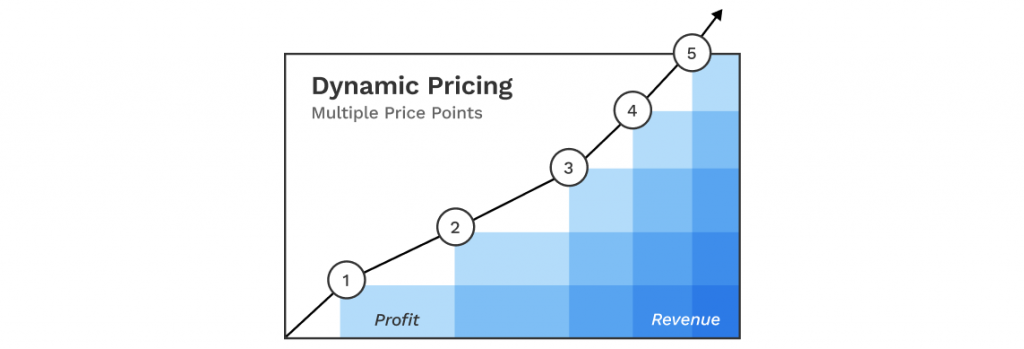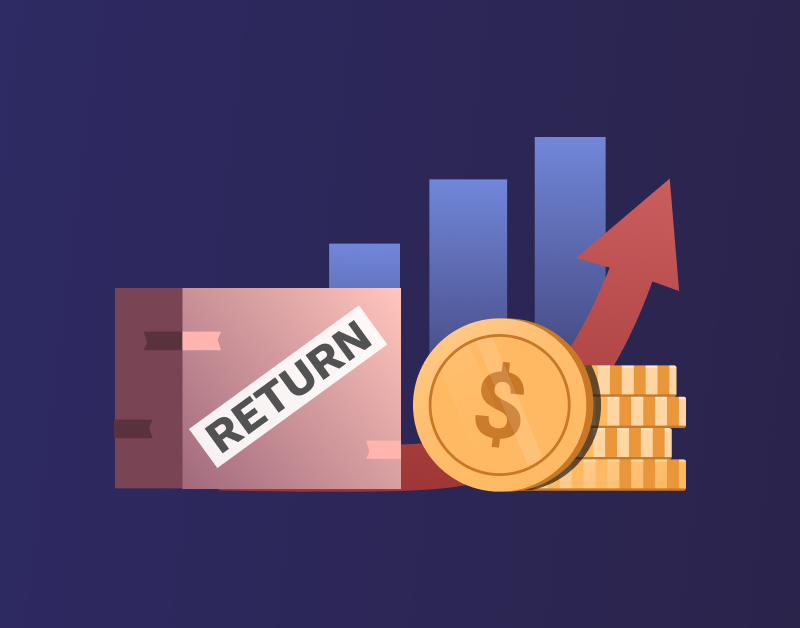5 Price Leadership Strategies to Keep Profits Booming
5 Price Leadership Strategies to Keep Profits Booming
At the end of Q1 2023, ecommerce businesses continue to face stiff economic challenges and a protracted environment of demand and supply chain uncertainty. With profit growth unlikely to come organically from macroeconomic trends for the foreseeable future, ecommerce decision-makers must devise alternative strategies to keep profits on the up. One strategy is establishing and leveraging price leadership.
In 2022, ecommerce revenue in the U.S. exceeded $1 trillion for the first time, growing 7% over 2021 totals. However, with inflation at 6.5%, these revenue gains nearly stalled industry growth and matched squarely with ecommerce’s consistent 14-15% share of total retail sales in recent years.
Whether 15% of total retail sales represents effective long-term saturation for ecommerce remains to be seen. To stay competitive and profitable, leaders must develop new profit strategies. This guide explains price leadership and how ecommerce companies can leverage it to drive profitability.
Key Takeaways
- With high inflation set to continue through 2023, businesses must develop price leadership strategies that maintain revenue and grow profits.
- Price leaders in an industry or market set pricing standards for competitors by holding a dominant market share or differentiating themselves from the competition in consumer perception.
- Businesses can maintain – and even gain – price leadership through dynamic pricing, bundling, and loyalty incentives.
What Is Price Leadership?
Price leadership refers to a business strategy for maintaining market dominance by setting price standards for the competition. Companies with larger market shares usually set prices for products and services, forcing competitors to follow suit. By establishing price leadership, businesses can influence market prices to their advantage and gain market share by undercutting the competition.
Price Leadership in Ecommerce
In traditional retail, brick-and-mortar locations often insulate businesses from engaging the competition on price alone. However, ecommerce customers can shop anywhere and anytime, making the lowest-priced option for the same product nearly always the most competitive.
To achieve price leadership, ecommerce companies must consistently undercut major competitors or grow market share through alternative strategies that entice customers and build loyalty.
3 Kinds of Price Leadership

Economists have traditionally identified three kinds of price leadership.
- Barometric: This occurs when companies follow the price changes of leading competitors in the market. Barometric price leaders typically have access to better pricing information – such as changes in supply, demand, or supply chain conditions – or a proven track record of high-performance pricing.
- Collusive: This involves a small group of companies in an industry working together to set prices. Collusive price leadership alliances form when a group or cartel of organizations with sufficient combined market share agree to maintain prices without directly competing. Collusive agreements stifle market competition and violate industry regulations in many countries.
- Dominant: A single company with the market share to set prices across a broad range of values and force other companies to follow its lead has established dominant price leadership. This type of price leadership appears more frequently in industries with high entry barriers – such as pharmaceuticals or aerospace – or clear market leaders, such as tech, where dominant market shareholders can dictate global pricing for entire product categories.
5 Price Leadership Strategies for Profitability
Suppose your business needs to gain market share and drive profitability but can’t endure an extended undercutting war with competitors. You must develop other tactics for differentiating yourself from the competition. Here are five price leadership approaches to consider.
1. Dynamic pricing

Dynamic pricing is a pricing strategy that adjusts prices in response to factors such as demand, seasonality, and competitor pricing changes. Businesses that are the first to react to market changes can anticipate emerging price standards and develop a barometric form of price leadership. To leverage dynamic pricing effectively for price leadership, businesses need live data from a pricing engine and automated price adjustments.
2. Bundling
Ecommerce companies can increase the perceived value of their offerings by bundling two or more products or services and offering them at a discounted price. Bundling gives businesses increased flexibility in pricing for profit as bundles may include products with varying margins. If you can’t beat a competitor on certain critical products, you may be able to bundle them with higher-margin products and establish a new standard while maintaining profitability.
3. Loyalty Programs
By offering discounts or rewards to customers who make repeat purchases, ecommerce companies can incentivize customers to choose them over competitors and maintain price leadership against undercutters. Recent studies indicate that loyalty-based incentives remain effective through unfavorable economic conditions and currently influence the buying decisions of 80% of U.S. consumers, including 79% among baby boomers and 81% among Gen Z respondents.
4. Free Shipping
Ecommerce companies have long used free shipping programs to influence customers’ value perceptions. Nowadays, 80% of internet consumers expect free shipping on orders over a certain dollar amount. By meeting consumer expectations for shipping value, businesses can offset potential profit losses by raising prices before shipping, retaining an edge over competitors trying to drive down prices.
5. Limited Time Offers
Companies can gain market share by using limited-time offers to create a sense of urgency. If time-sensitive discounts or special offers are sufficiently attractive to raise sales volumes for products without immediate supply limits, the increase in volume will protect profits even for lower-priced offers.

Real-Time Price Optimization Insights with Hypersonix
Hypersonix ProfitGPT is an innovative AI and machine learning-based profit optimization platform that gives ecommerce organizations critical pricing and inventory insights and recommendations. Simply connect your ecommerce and enterprise resource planning systems to ProfitGPT and unlock a wealth of data and highly detailed recommendations to drive profitability in complex markets and challenging economic conditions.
Request a personalized demo of ProfitGPT today to learn more.





